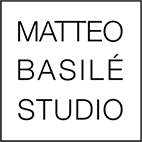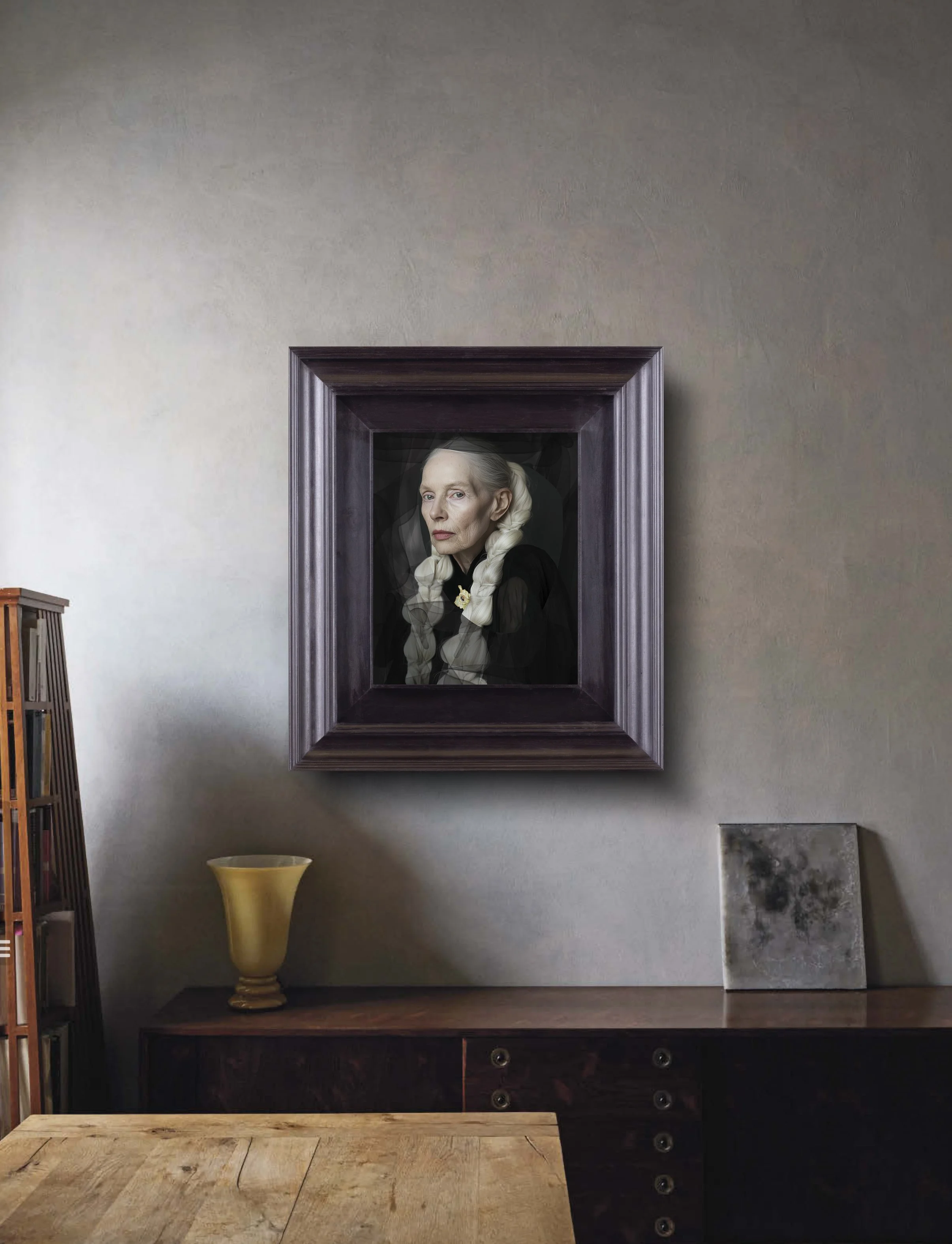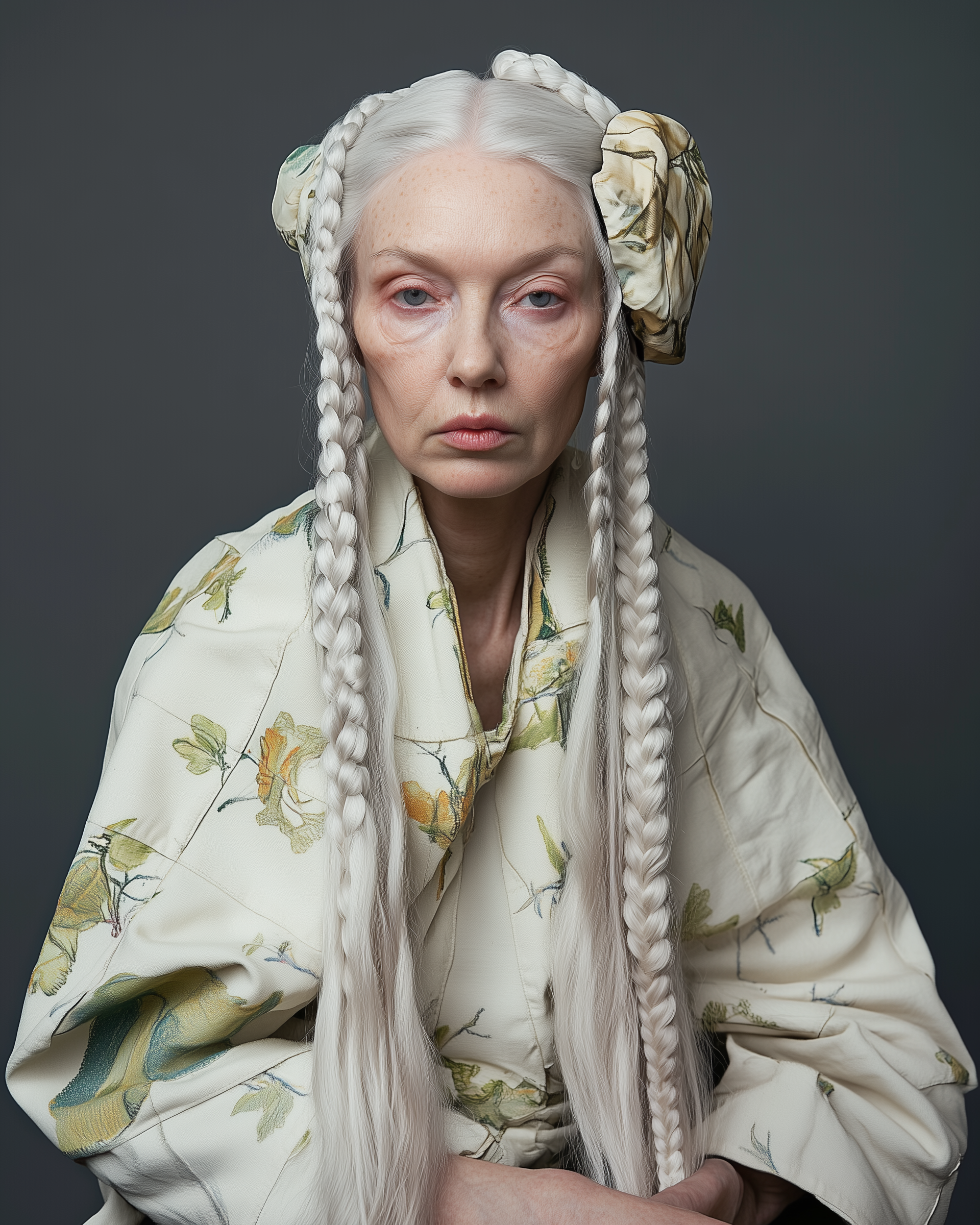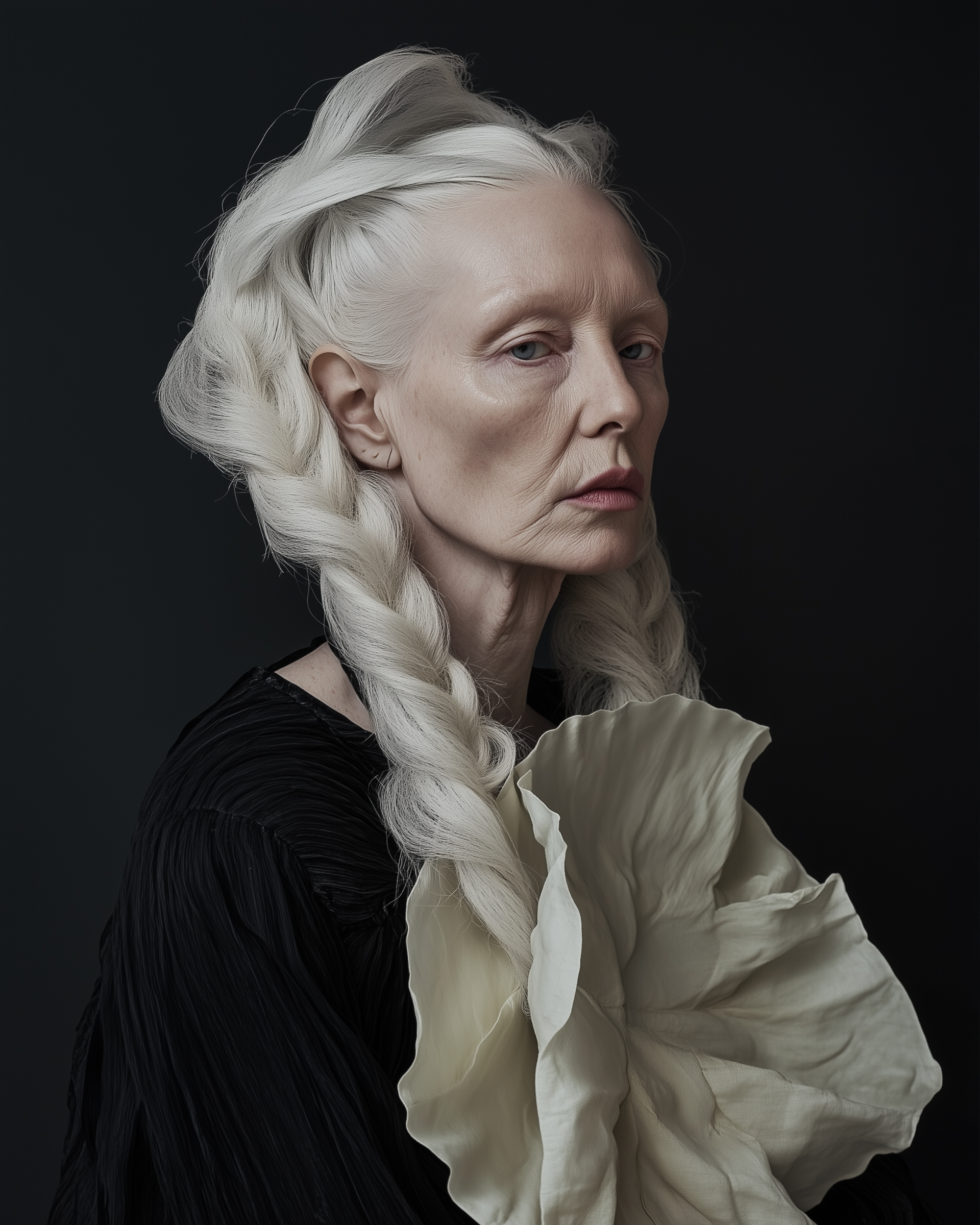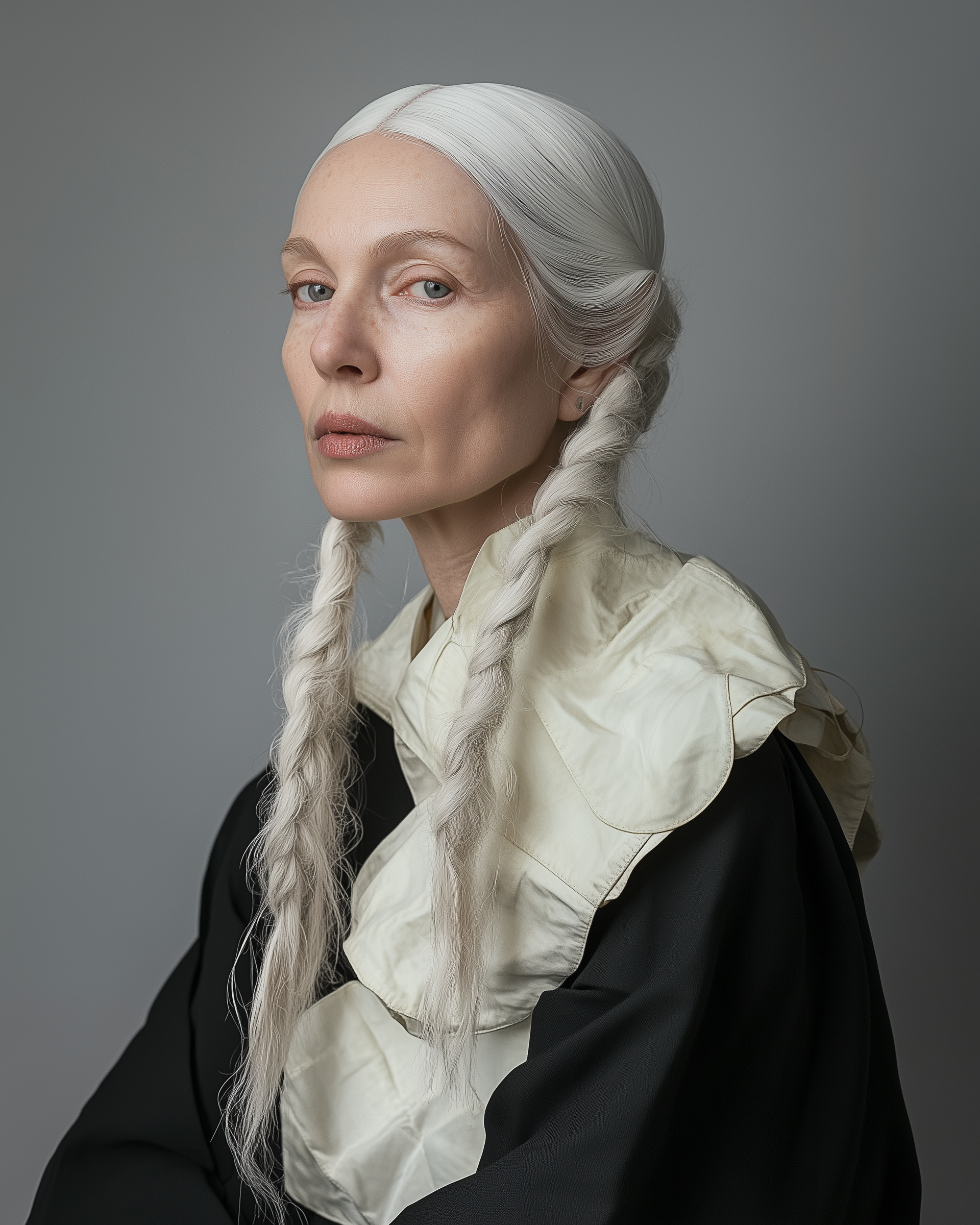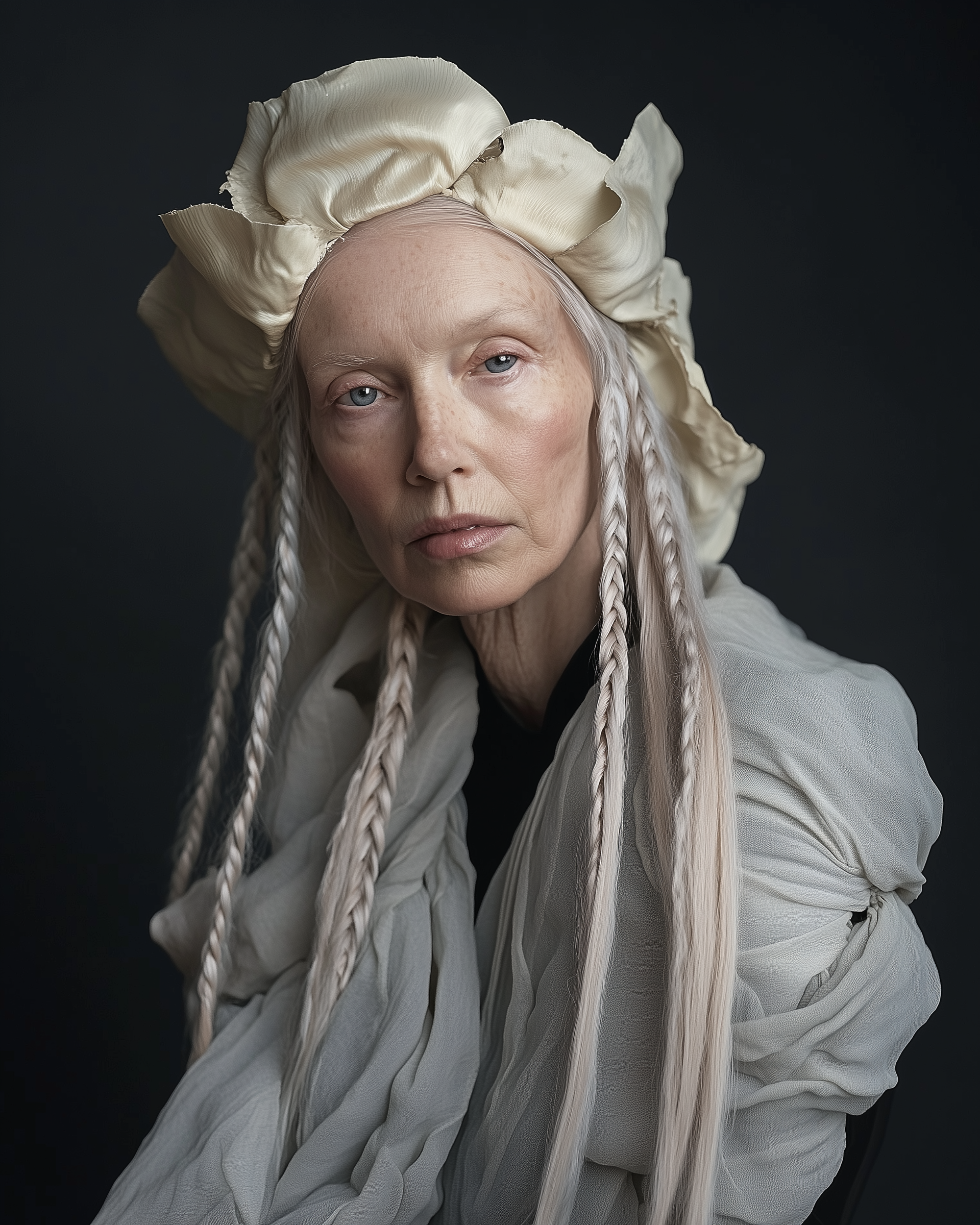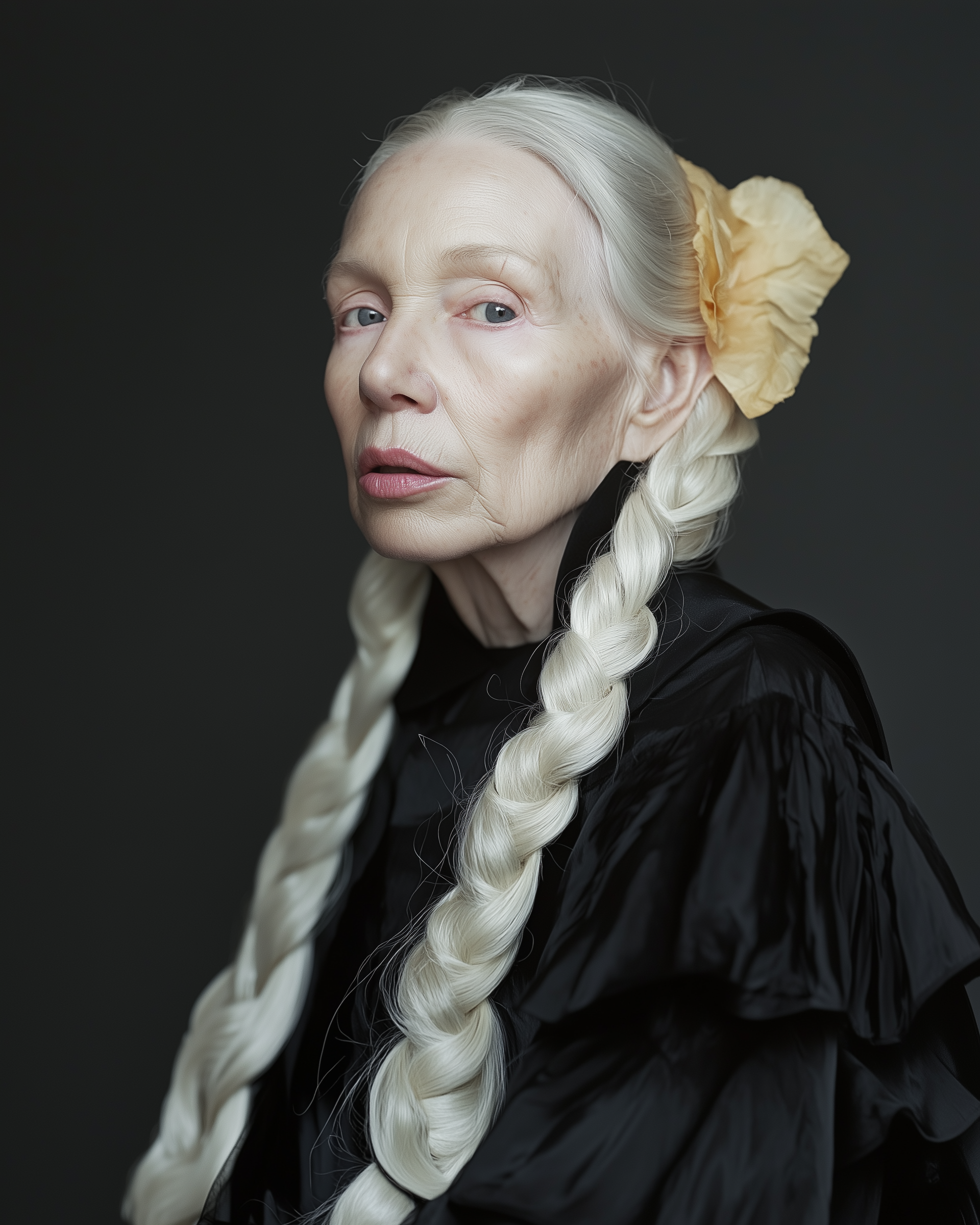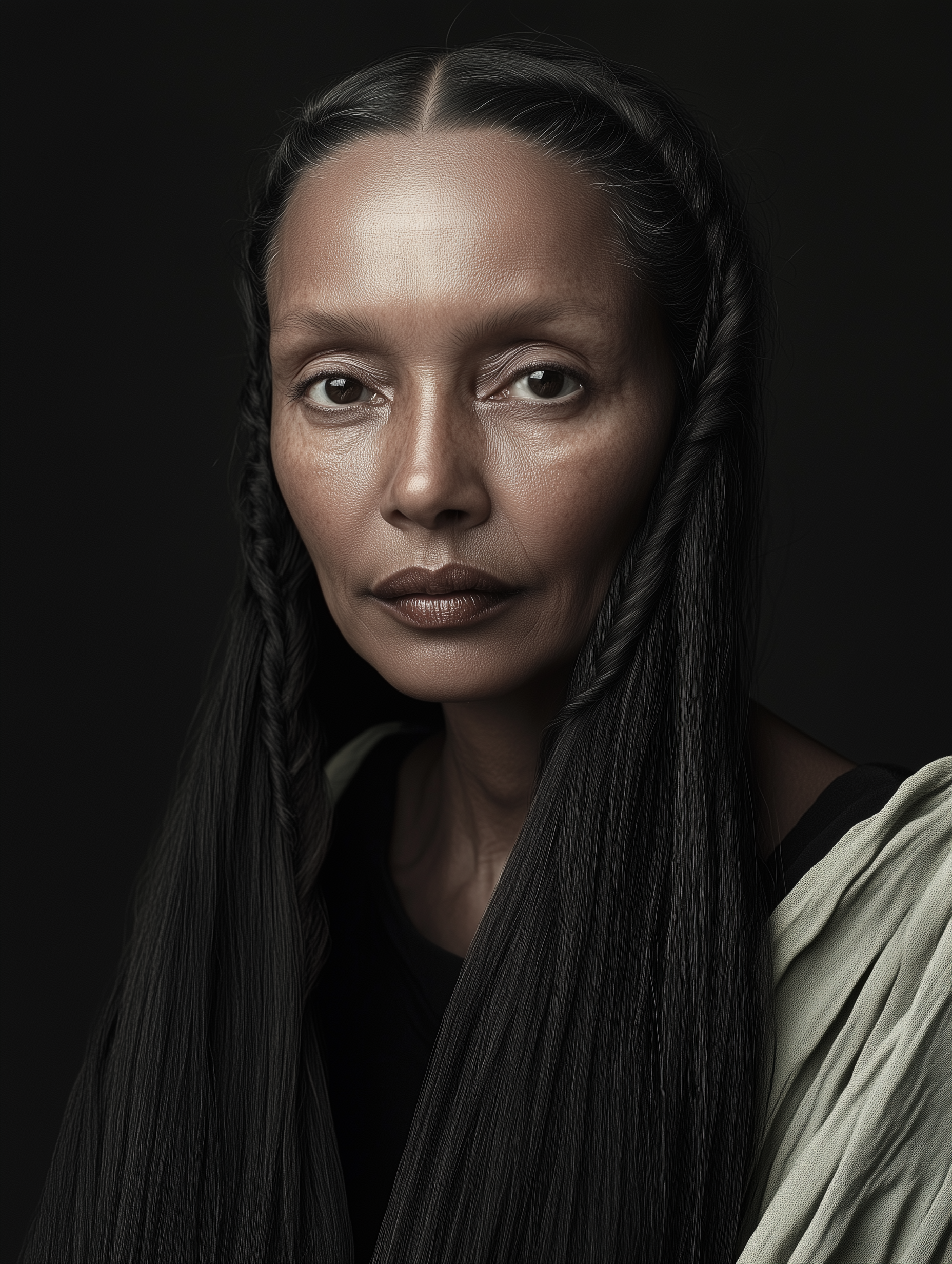LUMEN ET OMBRA
Nel tempo che consuma e dissolve, la bellezza esteriore sfiorisce, ma l’essenza di un volto persiste. Lumen et Ombra è un’indagine di Matteo Basilé sulla permanenza dell’essere oltre la caducità della materia, un progetto che arresta il decadimento per rivelare la forza intatta del carattere. Non si tratta di semplici immagini, ma di un processo che fonde fotografia, intelligenza artificiale e programmazione, dando vita a un nuovo paradigma del ritratto.
Il titolo Lumen et Ombra non è soltanto un riferimento alla tecnica pittorica, ma un concetto che abbraccia l'intera natura dell'opera. Lumen rappresenta la parte visibile, il ritratto fisico, la forma tangibile attraverso cui l’identità si manifesta. Ombra, invece, è il suo destino nascosto, la dimensione segreta che si rivela solo attraverso la tecnologia. Inquadrando l’opera con un’App dedicata, lo spettatore può accedere a una metamorfosi invisibile, scoprendo un mondo sospeso tra realtà e immaginazione.
Ogni ritratto prende origine da un ‘seme’ visivo, sviluppato attraverso un rigoroso processo di addestramento realizzato da Matteo Basilé: partendo da una serie di ritratti reali, è stata generata una genealogia infinita di figure femminili, ascetiche e nobiliari, immerse in un tempo sospeso. Il risultato è un’umanità impossibile, che fonde la ritrattistica fiamminga e spagnola con una nuova forma di esistenza digitale.
Come scriveva John Berger in Ways of Seeing, "ogni ritratto è una negoziazione con il tempo"—non è mai solo una rappresentazione, ma un atto di resistenza. Rosalind Krauss suggerisce che “la fissità del soggetto è un’illusione: dietro ogni posa si nasconde una trasformazione in atto”. Qui, il mezzo digitale non si limita a catturare un’immagine, ma la reinventa, la sintetizza e la proietta in una dimensione dove il tempo non ha più una traiettoria lineare.
L'opera non è mai statica né definitiva. Il concetto di phygital, su cui Matteo Basilé lavora da anni, permette di mutare la ‘sceneggiatura’ dell’immagine, trasformando il destino del soggetto raffigurato senza che il possessore ne sia consapevole. Lumen et Ombra ridefinisce così la natura del ritratto, rendendolo un’entità viva e mutevole, in costante dialogo con il tempo e con chi lo osserva.
Come nelle tele di Velázquez, Rembrandt o Antonello da Messina, lo sguardo non è soltanto una finestra sull’identità, ma un varco verso una narrazione inesauribile. I ritratti di Matteo Basilé non sono esercizi di fissità, ma di eternità mutevole. Sono volti che resistono, si trasformano e continuano a vivere, ben oltre la loro immagine.
LUMEN ET OMBRA
As time consumes and dissolves, external beauty fades, yet the essence of a face endures. Lumen et Ombra is an exploration by Matteo Basilé of the persistence of being beyond the transience of matter—an artistic project that halts decay to reveal the unyielding strength of character. These are not mere images; they emerge from a process that intertwines photography, artificial intelligence, and programming, shaping a new paradigm of portraiture.
The title Lumen et Ombra is not merely a reference to pictorial technique but encapsulates the very essence of the work. Lumen represents the visible aspect, the physical portrait, the tangible form through which identity manifests. Ombra, on the other hand, is its hidden destiny, the secret dimension that unfolds only through technology. By framing the artwork with a dedicated app, the viewer accesses an invisible metamorphosis, uncovering a world suspended between reality and imagination.
Each portrait originates from a visual 'seed,’ meticulously developed through an extensive training process conducted by Matteo Basilé: beginning with a series of real portraits, an infinite genealogy of female figures emerges—ascetic and noble, immersed in a suspended temporality. The result is an impossible humanity, a fusion of Flemish and Spanish portraiture with a new digital existence.
As John Berger wrote in Ways of Seeing, "every portrait is a negotiation with time"—it is never just a representation but an act of resistance. Rosalind Krauss suggests that "the fixity of the subject is an illusion: behind every pose lies an ongoing transformation." Here, the digital medium does not merely capture an image; it reinvents, synthesizes, and projects it into a realm where time no longer follows a linear trajectory.
The artwork is never static nor definitive. The phygital concept, on which Matteo Basilé has been working for years, allows for the rewriting of its ‘script,’ altering the fate of the portrayed subject without the owner's awareness. Lumen et Ombra thus redefines the nature of portraiture, transforming it into a living, mutable entity, in constant dialogue with time and its observers.
As in the paintings of Velázquez, Rembrandt, or Antonello da Messina, the gaze is not merely a window into identity but a gateway to an inexhaustible narrative. The portraits of Matteo Basilé are not exercises in fixity but in mutable eternity. They are faces that resist, transform, and continue to exist, far beyond their image.
